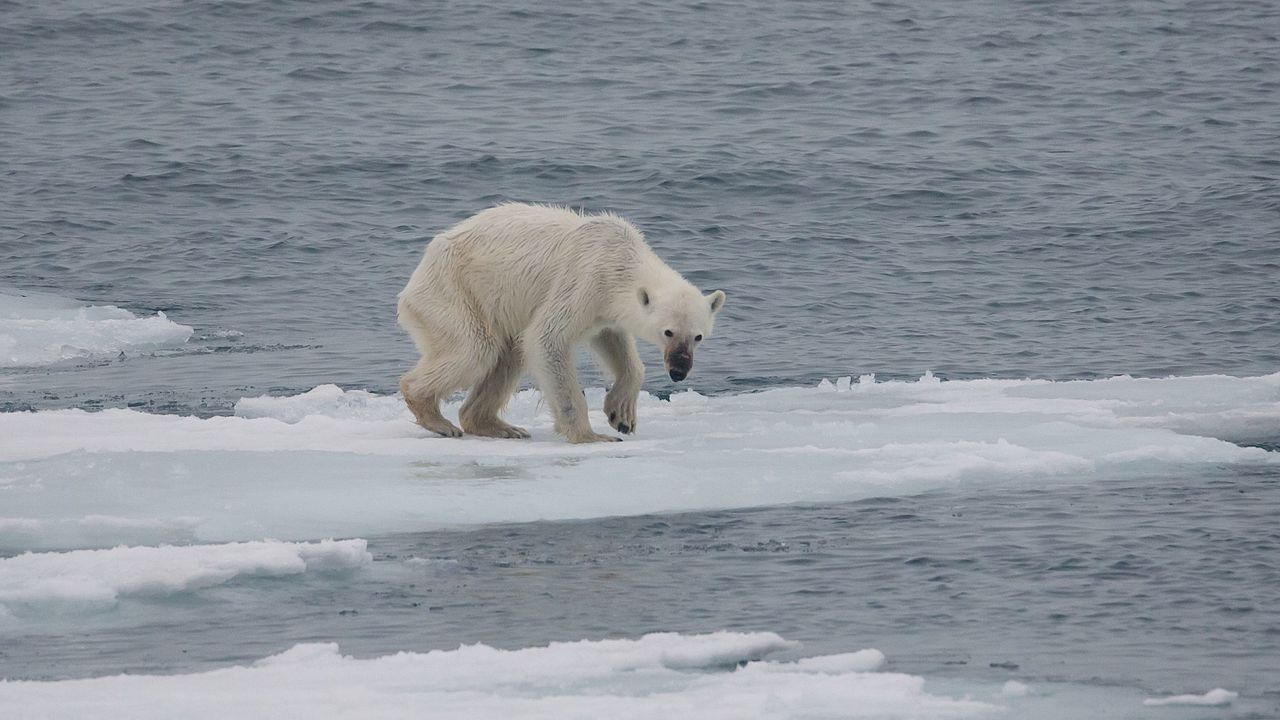Polar bears remain at risk of starvation despite behavioural and diet plasticity on land, according to a new study published in Nature Communications by Pagano et al.
Due to climate change, sea ice in the Arctic has undergone a severe decline in coverage and thickness, impacting the Arctic marine ecosystem. The apex predator in the Artic marine ecosystem, polar bears are significantly impacted by changes in sea ice; it is sea ice that they use as a platform to hunt their prey, ringed and bearded seals, during late spring and early summer when the seals are birthing and raising their pups. However, climate change is reducing the availability and stability of sea ice, forcing polar bears to adopt new behaviours to survive, including spending more time on land.
In this study, the researchers measured the daily energy expenditure, diet, behaviour, movement, and body composition changes of 20 polar bears on land over 19–23 days from August to September (2019–2022) in Manitoba, Canada. The researchers wanted to see if polar bears could spend extended durations of time on land, without access to their primary prey, and if they do so by reducing energy expenditure or if they were more likely to adopt new behavioural or physiological strategies. Finally, the researchers wanted to see if consumption of terrestrial food sources could meet the energy needs of polar bears.
The results showed that there was a 5.2-fold range in daily energy expenditure and a 19-fold range in activity between the polar bears. This reflected the fact that some polar bears had daily energy expenditures equivalent to hibernation, while other polar bears were as active as they were on sea ice. On land, berries, vegetation, birds, bones, antlers, seal, and beluga were the sources of food consumed; consuming these foods was shown to have little benefit beyond compensating for elevated daily energy expenditure. Terrestrial foraging did not prolong the predicted time to starvation, with 19/20 bears losing body mass over the study period.
Polar bears demonstrated individual variation in energetic and movement strategies to adapt to a lack of their primary prey source. Most polar bears adopted a foraging response, while some bears adopted a fasting response. As most polar bears adopted a foraging response, the researchers speculated that polar bears are likely to increasingly influence the terrestrial ecosystem, as climate change continues to degrade the Arctic marine ecosystem around them.
The researchers’ findings show that polar bears remain highly vulnerable and are at risk of starvation on land, which is worrying given that they are likely to become increasingly reliant on terrestrial food sources.
This article is based on Pagano AM, et al. Nat Commun. 2024; 15: 947.


Leave a Reply
You must be logged in to post a comment.